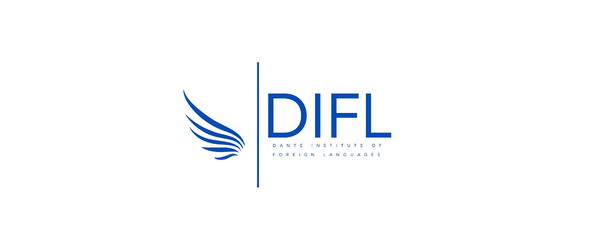Why Native Speakers may not prove to be a good language teacher Introduction:
The role of native speakers as foreign language teachers is often held in high regard, assuming that their innate language proficiency automatically translates into effective teaching. However, it is crucial to critically examine this assumption and consider the limitations that native speakers may encounter when teaching a foreign language. In this article, we will delve into these limitations, drawing from real-life experiences and examples to shed light on the complexities that hinder effective language instruction.
Why Native Speakers may not prove to be a good language teacher Introduction:
the role of native speakers as foreign language teachers is often held in high regard, assuming that their innate language proficiency automatically translates into effective teaching. However, it is crucial to critically examine this assumption and consider the limitations that native speakers may encounter when teaching a foreign language. In this article, we will delve into these limitations, drawing from real-life experiences and examples to shed light on the complexities that hinder effective language instruction.
1. Tense and Structural Differences:
One significant challenge that native speakers face is the existence of tenses and structures in the language being taught that may not exist in their native language or the language of instruction. For instance, in the context of teaching French to English speakers, the subjunctive mood is widely used in French, while it is less prevalent in English. Native English speakers may struggle to teach the intricacies of the subjunctive mood, as it is not a familiar concept in their own language. This disconnect can lead to difficulties in effectively conveying the nuances of certain language elements.
2. Lack of Awareness of the Language Learning Process:
Native speakers acquired their language naturally, without undergoing a systematic process of learning. As a result, they may find it challenging to understand the intricacies and difficulties faced by non-native learners. Language learning involves breaking down complex concepts, practicing different skills, and understanding grammar rules systematically. Native speakers may take these aspects for granted, making it difficult for them to empathize with learners’ struggles and provide appropriate guidance.
3. Difficulty in Bridging the Knowledge Gap:
Native speakers may also find it challenging to adapt to the level of the learners since they have never experienced the process of learning their own language from scratch. It can be difficult for them to gauge the appropriate level of instruction, inadvertently skipping essential foundational concepts or overwhelming learners with advanced topics. This lack of perspective and empathy can hinder effective teaching and impede students’ progress.
4. Underestimation of Language Complexity:
Native speakers may unconsciously assume that their language is easy since they acquired it effortlessly. This mindset can lead them to overlook the complexities, unique grammar structures, and pronunciation difficulties that learners must navigate. As a result, native speakers may struggle to provide targeted support and guidance in overcoming these challenges.
5. Importance of the Native Language as the Medium of Instruction:
One crucial aspect that is often overlooked is the choice of the language of instruction. It is argued that the best language of instruction should be the native language of the learner rather than a third language. For instance, in India, many learners face challenges when their foreign language teachers use English as the medium of instruction. While the teachers may have been trained using English as the instructional language, the learners may not have a strong foundation in English grammar or a thought process aligned with English. This mismatch hampers the learners’ comprehension of the concepts taught.
Real-Life Example:
Consider the case of Vinod Tiwari, a student who had previously learned French at a renowned institute. Despite not having a strong grasp of English grammar basics, the medium of instruction used by his previous teacher was English. During the lesson on Passé composé, Vinod was informed that it includes the present perfect tense in English, alongside other uses like the Simple Past. He asked the teacher for the Hindi equivalent of the present perfect tense, and the teacher told him it was “खा चुका है (kha chuka hai),” which actually translates to “have / has eaten” in English.
When Vinod inquired about what tense is “खाया है (khaya hai),” the teacher, despite being a native Hindi speaker, became confused and incorrectly labeled it as the “present simple” tense, rather than recognizing the fact that it is also the present perfect tense in Hindi. This miscommunication left Vinod with a faulty understanding of the concept, causing him significant confusion and difficulties in his language learning journey. This is just one such one example out of thousands I have seen during my entire teaching career of more than 3 decades.
6. Potential Influence of Local Dialects:
Another factor to consider is that native speakers themselves may be influenced by regional dialects that differ from the standardized form of the language being taught. This can introduce variations in vocabulary, pronunciation, and grammar, which may lead to confusion among learners. Native speakers must be aware of these variations and ensure they teach the standardized form of the language to avoid inconsistencies and confusion.
7. Inadequate Training in Pedagogy:
While native speakers possess a natural command of their language, it does not automatically qualify them as proficient language instructors. Teaching requires specialized knowledge of pedagogy, language teaching methodologies, and effective classroom management. Native speakers who have not received proper training in these areas may struggle to create structured lesson plans, provide appropriate scaffolding, or address the diverse learning needs of their students.
Conclusion:
While native speakers bring valuable insights and fluency to the language teaching process, it is crucial to recognize the limitations they may face. Differences in tense and structure, a lack of awareness of the language learning process, challenges in bridging the knowledge gap, underestimation of language complexity, and potential dialect variations can hinder their effectiveness as foreign language teachers.
Furthermore, the choice of the language of instruction should prioritize the native language of the learner, as using a third language can impede comprehension and hinder the learning process. It is essential to provide adequate training and support to native speakers to enhance their teaching skills and ensure effective language instruction for learners. By addressing these limitations and fostering a comprehensive approach to language teaching, we can create a more inclusive and successful learning environment for all language learners.
At DIFL (Dante Institute of Foreign Languages), we understand the importance of effective language instruction and the role of the native language of the learner as the medium of instruction. We believe that using the learner’s native language as the primary medium of instruction can greatly enhance the learning experience and accelerate language acquisition.
Our teaching methodology at DIFL is designed to cater to the diverse needs of our students, including those with limited English proficiency or a weaker academic background. We recognize that not all learners have a strong foundation in grammar or a comprehensive understanding of English as a medium of instruction. Therefore, our highly trained faculty members are equipped with the skills to explain concepts and lessons in both English and Hindi, ensuring that every student comprehends the material effectively.
By using the native language of the learner, we create a comfortable and inclusive learning environment. Students can express their thoughts, ask questions, and participate actively in discussions without the barrier of language limitations. This approach helps to build confidence and fosters a deeper understanding of the foreign language being taught.
Our faculty members undergo extensive training in language pedagogy and teaching methodologies. They are adept at adapting their teaching styles to meet the specific needs of each student. Whether it’s explaining complex grammatical concepts or providing step-by-step guidance, our instructors ensure that all students receive personalized attention and support.
By incorporating both English and Hindi into our instruction, we bridge the gap between the native language of the learner and the foreign language being taught. We strive to provide comprehensive explanations that take into account the linguistic nuances of both languages. This approach not only accelerates the learning process but also helps students develop a solid foundation in the target language.
A prime example of our effective teaching methodology is the experience of our student, Vinod Tiwari. Despite his limited knowledge of English grammar and a weak academic background, our faculty members were able to explain complex concepts to him in both English and Hindi. By using Vinod’s native language as the medium of instruction, we ensured that he understood the intricacies of the language, avoiding any misunderstandings or faulty concepts. This approach tremendously accelerated his learning and enabled him to overcome the challenges he faced previously.
At DIFL, we prioritize the individual needs of our students and strive to create a supportive and immersive learning environment. By using the learner’s native language as the medium of instruction and providing comprehensive explanations in both English and Hindi, we ensure that every student, regardless of their language proficiency or academic background, can excel in their language learning journey.
Through our approach, we have witnessed remarkable results, with students achieving significant progress and proficiency in their chosen foreign language. We are proud to offer a learning experience that caters to the unique needs of each student, fostering their passion for language learning and empowering them to become confident communicators.
Join DIFL today and experience the difference our inclusive and student-centric approach can make in your language learning journey. Let us guide you towards fluency and mastery in the foreign language of your choice, all while embracing the power of your native language.
If you have a passion for foreign languages and cultures, look no further than our esteemed language institute in Jaipur. We offer exceptional online language classes for various foreign languages, catered to learners of all proficiency levels. Our team of expert instructors will guide you through your language learning journey, from beginners to advanced levels.
If you have any questions about our courses or would like to learn more, please feel free to contact us at your convenience. You can reach us by calling Mr. Priyanshu Sharma at 9929-51 51 51, Mrs. Roopshikha Sharma at 9314502814, or Mr. Akash Verma at 9001016193. Alternatively, visit our website at www.mydifl.com for further information.
Our friendly and knowledgeable team is always ready to assist you in any way possible. Take advantage of the best language courses available in Jaipur and start your language learning journey today. We look forward to hearing from you!

